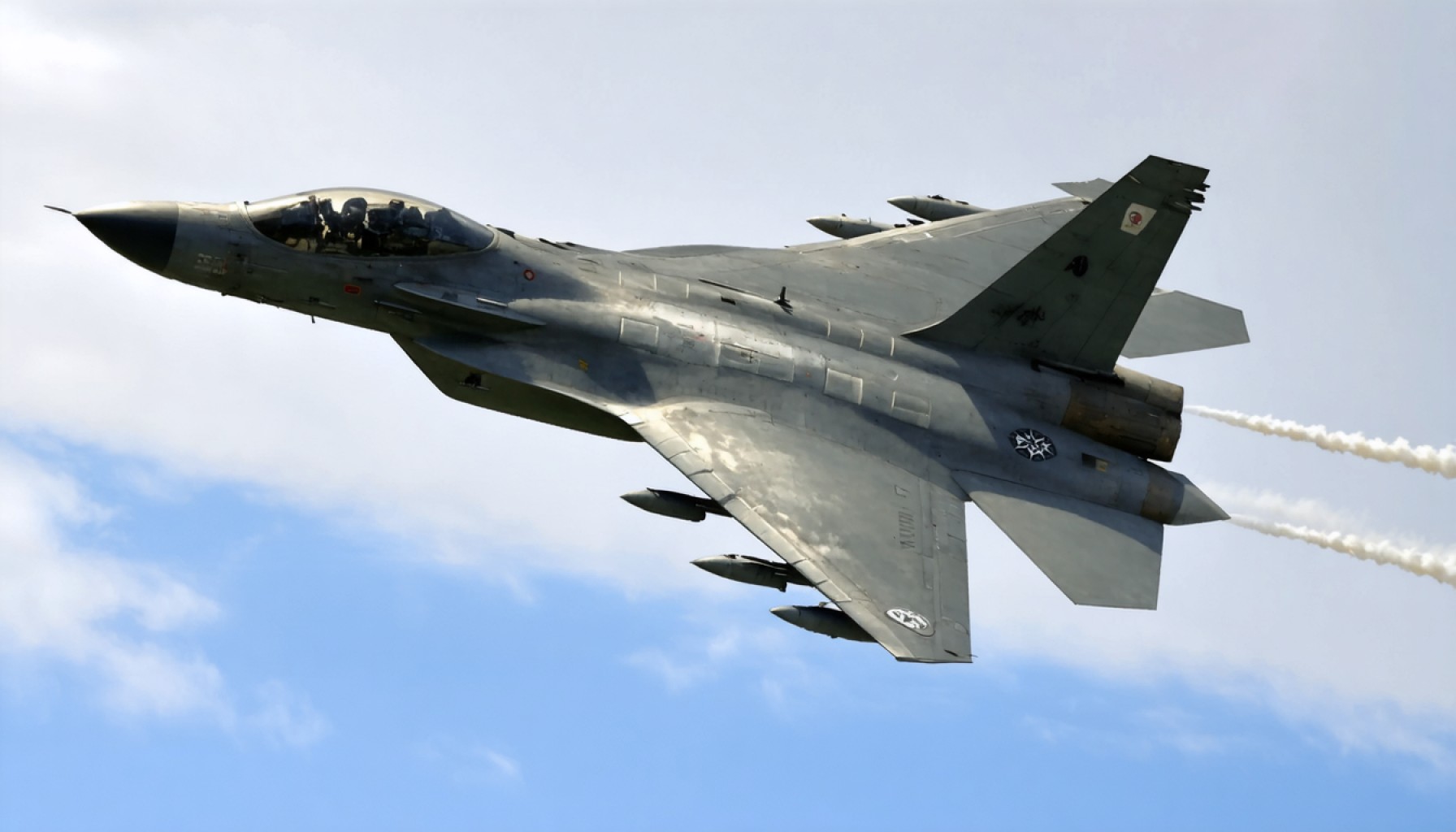- Algeria bolsters its military with the Su-35 fighter jet at Ain Beida/Oum el Bouaghi Air Base, marking a significant shift in regional power.
- Satellite imagery confirms the presence of Su-35s, originally intended for Egypt but redirected to Algeria due to U.S. sanctions on Egypt.
- The acquisition positions Algeria as a dominant air power in Africa, with potential future ties to the advanced Russian Su-57 stealth jets.
- The Su-35s enhance Algeria’s existing fleet, which includes Su-30s and MiG-29s, creating a formidable layered defense system.
- Algeria’s strategic aircraft purchases highlight its strong ties with Russia and emphasize its resistance to NATO’s influence in the region.
- This development underscores the transformative and often silent nature of geopolitical alliances and military strategies.
Beneath the expansive skies of northern Africa, Algeria’s military roster is experiencing a quiet but powerful transformation. With the arrival of the celebrated Su-35 fighter jet at Ain Beida/Oum el Bouaghi Air Base, as confirmed by recent satellite imagery, Algeria cements its status as a significant military power in the region. This advance silently unfolds while Moscow maintains a stoic, public silence on the matter—neither confirming nor denying the sale.
Algeria’s rumored acquisition of these advanced aircraft didn’t emerge from thin air. Reports and social media activity have suggested for months that Russia’s Su-35 jets, originally destined for Egypt, have instead taken a detour to Algeria. The dark shadows of these machines now silhouette themselves against the desert sun, indicating a significant shift in Algeria’s strategic capabilities. The jets, with their characteristic sleek designs and Egyptian-inspired color schemes, found a new home following Egypt’s withdrawal from the purchase due to looming U.S. sanctions.
This development comes on the heels of Algeria’s tentative plunge into stealth technology with potential ties to Russia’s enigmatic Su-57 jets. If Algeria secures the Su-57s, its air force would become unrivaled in Africa—a testament to its aerial ambition and Russia’s enduring influence in the region. These acquisitions indicate a clear message: Algeria is fortifying its skies with unmatched potency.
The Su-35, with its agility and advanced avionics, complements Algeria’s existing air fleet, which includes the Su-30 and MiG-29 Fulcrums, creating a layered defense web capable of confronting any regional threats. Meanwhile, on the other side of regional geopolitics, Iran’s expected reception of the Su-35 remains a point of conjecture. Although a senior Iranian official has confirmed the deal, concrete confirmations or sightings of these jets remain elusive, painting a picture of international intrigue and military chess.
Beyond the immediate military implications, Algeria’s strategic aircraft acquisitions echo broader geopolitical themes. They highlight the enduring ties between Algeria and Russia despite international tensions and underscore Algeria’s resolve to remain unyielding against NATO’s past and future regional actions.
The presence of the Su-35 jets in Algerian airspace sends ripples beyond military ranks. It serves as a reminder that in global geopolitics, silence can shield significant shifts—transformations that reinterpret alliances and redefine power structures. Should these rumored purchases bear fruit, Algeria is set on a path where the roar of its engines will command both respect and attention across the continent and beyond.
Algeria’s Military Might: The Strategic Acquisition of Su-35 Fighter Jets
Introduction
Algeria’s recent acquisition of the Su-35 fighter jets marks a pivotal moment in its military evolution and regional influence. With the integration of these advanced aircraft, Algeria signals its readiness to bolster its defense capabilities significantly, asserting its position as a formidable force in North Africa.
Understanding the Su-35: Features and Capabilities
The Su-35 is a highly maneuverable, multi-role fighter jet equipped with state-of-the-art avionics. Here are its standout features:
1. Advanced Avionics: The Su-35 comes with an integrated radar system capable of detecting multiple targets at various ranges, enhancing situational awareness.
2. Stealth Capabilities: While not a full stealth aircraft, the Su-35 incorporates some stealth technology that reduces its radar cross-section.
3. Agility and Speed: The jet can reach speeds of up to Mach 2.25 and features thrust-vectoring nozzles that grant superior agility.
4. Long Range and Combat Radius: With aerial refueling capabilities, the Su-35 ensures extended operational ranges, vital for large territorial coverage.
Geopolitical Implications
The aircraft’s arrival signifies more than just an enhancement of Algeria’s air force:
– Russian-Algerian Relations: This acquisition reinforces the close military ties between Russia and Algeria, despite Western sanctions on Russia. It underscores Algeria’s strategic independence in international relations.
– Regional Power Dynamics: The presence of Su-35s alters the military balance in North Africa, potentially prompting neighboring countries to reassess their defense strategies.
Market Forecasts & Industry Trends
– Increased Defense Spending: Algeria is likely to continue its trend of modernizing its military forces, signaling an increase in defense budgets and more acquisitions in the future.
– Potential Su-57 Acquisition: Algeria’s possible interest in the Su-57 stealth fighter could push the country further up the ladder of air superiority in Africa.
Real-World Use Cases
These jets are not just for show; they fulfill several critical roles:
– Air Superiority Missions: Ensuring control of the skies during conflicts.
– Ground Attack: Capable of precision airstrikes in counter-insurgency operations.
– Reconnaissance and Surveillance: Enhanced sensors for intelligence-gathering missions.
Controversies & Limitations
While the Su-35 brings several advantages, there are associated risks and controversies:
– Dependence on Russian Maintenance: Continued reliance on Russia for maintenance and parts could become problematic amid geopolitical tensions.
– Western Sanctions: Algeria’s acquisition might prompt diplomatic tensions with countries critical of Russia’s actions.
Pros & Cons Overview
– Pros: Enhanced air capabilities, bolstered deterrence, improved defense infrastructure.
– Cons: High operational costs, potential diplomatic fallout, dependent logistics.
Actionable Recommendations
– Strategic Partnerships: Engage in joint exercises with friendly nations to optimize operational integration of the Su-35.
– Maintenance Strategy: Develop an indigenous capability for parts manufacturing and maintenance to mitigate potential supply chain issues.
– Diplomatic Balancing: Continue diplomatic engagement with both Western and Russian allies to maintain economic and military relationships.
This development in Algeria’s defense capabilities reflects broader trends and strategic alignments within global geopolitics, emphasizing that nations continue to pursue advanced military technologies to solidify their regional standings.
For more on global defense trends, visit ABC News or BBC News.







